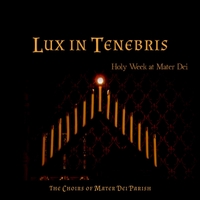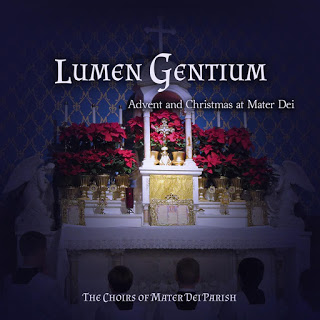In this post, I talk about Missa Spiritus Sancti, which is available for download below. I have included a playback video of each part of the Mass setting after describing each piece.
Missa Spiritus Sancti – Drake
Background
On May 31, 2009, I became engaged to my wife. Well, she wasn’t my wife then, but you know what I mean. It was Pentecost Sunday as well as the Feast of the Coronation of Mary. From that moment, we began a spiritual journey towards the sacrament of matrimony and got started with all of the mundane tasks involved in planning a wedding. I was looking for work (it was 2009, after all) and had some extra time on my hands, so I devoted some of it to writing a Mass setting for our upcoming wedding. Since we became engaged on Pentecost, I named the work Missa Spiritus Sancti.
Discussion
Missa Spiritus Sancti is written in five parts: two soprano lines, alto, tenor, and bass. At times the two sopranos are doubled for a few measures. Occasionally the bass and tenor are likewise doubled. In general, the Mass is written in the classical style (rather than renaissance or baroque). The highest note for the first soprano is a passing A in the Benedictus. In other sections of the Mass, it is not uncommon for the first soprano to sing a G. The highest note for the second soprano is F. For the bass, the lowest note is G, and the highest tenor note is an F. All-in-all, Missa Spiritus Sancti is a relatively short Mass setting compared with those of the renaissance.
Kyrie
The two Kyrie sections are identical, making the Kyrie one of the easier pieces to learn. The middle Christe section is sung a bit faster than the Kyrie sections. At measure 9 and again at measure 30, the three top voices are whole steps apart, creating a passing dissonance that, I think, works nicely.
Gloria
The Gloria was, without question, the most difficult piece to compose, if only because of its length. It has some similarities with chant, with some sections in 4 and some in 3 (chant has rhythmic groupings of 2 and 3). In the Gloria, I make considerable use of 7th chords for modulation.
At the first Jesu Christe, the key changes from F to C, and a lengthening of the texture from 3:4 into 4:4. The section following (Domine Deus Angus Dei Filius Patris) should be sung sweetly (dulce) with the alto coming through as the other voices sing together. The Qui tollis section has some interesting misereres before coming to the Quoniam. The second Jesu Christe mimics the first. Cum Sancto Spiritu brings us back to tempo and back into the key of F. The Amen gives the bass the opportunity to shine as it moves from C up nine steps to D before the tenor has the final word.
Sanctus
The beginning of the Sanctus is perhaps my favorite part of the entire Mass. With great reverence we modulate all the way from C minor to B major. Originally I had set the key signature to C minor, but our choir director found it easier to read with all of the accidentals written in. For this reason, the key signature is simply C.
As each sanctus comes in, the dynamic grows through the key change, then diminishes with the second soprano having the final sanctus. The pleni sunt section modulates, and we start shedding sharps until at the conclusion of the Hosanna, we are in fact, in C major.
I especially like the tenor line in the Hosanna section, with the moving notes and the melodic descent in small intervals.
Benedictus
I think the Benedictus is our choir’s favorite piece of this Mass setting. While it is short, there is a lot of movement, and a cascading imitation on the word Benedictus. I like the tenor’s Hosanna here perhaps even better than in the Sanctus, as it slowly works its way up the chromatic scale. As mentioned before, the Benedictus finds the highest note in the Mass with the first soprano’s passing A at the climax of the Hosannas.
Agnus Dei
I’ll never forget my original draft where I mistakenly switched the G and N in the title which read Angus Dei and someone commented, “Oh, the beef of God!”
The Agnus Dei is probably the calmest piece in Missa Spiritus Sancti. It has a decidedly minor sound, particularly in the misereres. The final Agnus mimics the first, but is more embellished, and the dona nobis pacem ends on the final major chord, departing from the G minor key signature.
Final Thoughts
Heretofore, this Mass setting has only been sung at our local parish. By releasing it via Creative Commons, I hope that it will be available for other choirs. A PDF download of the score is available below. I’d love to hear from you if your choir is singing this or any of my music.
Ad majorem Dei gloriam




